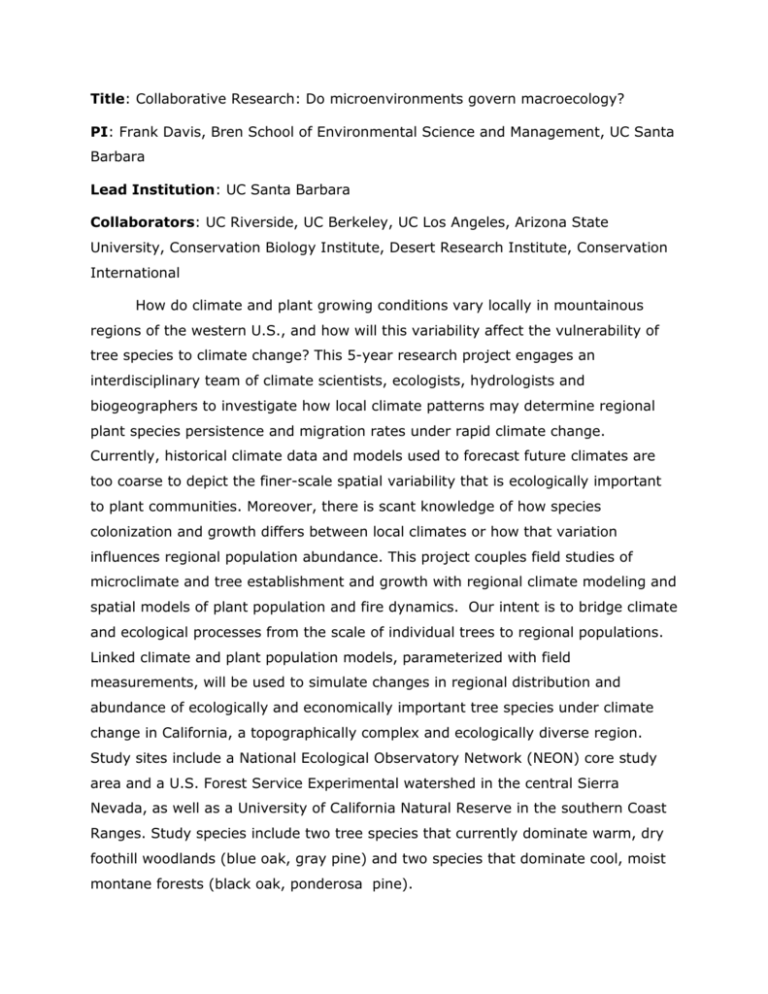fdavis_macosystem_2par
advertisement

Title: Collaborative Research: Do microenvironments govern macroecology? PI: Frank Davis, Bren School of Environmental Science and Management, UC Santa Barbara Lead Institution: UC Santa Barbara Collaborators: UC Riverside, UC Berkeley, UC Los Angeles, Arizona State University, Conservation Biology Institute, Desert Research Institute, Conservation International How do climate and plant growing conditions vary locally in mountainous regions of the western U.S., and how will this variability affect the vulnerability of tree species to climate change? This 5-year research project engages an interdisciplinary team of climate scientists, ecologists, hydrologists and biogeographers to investigate how local climate patterns may determine regional plant species persistence and migration rates under rapid climate change. Currently, historical climate data and models used to forecast future climates are too coarse to depict the finer-scale spatial variability that is ecologically important to plant communities. Moreover, there is scant knowledge of how species colonization and growth differs between local climates or how that variation influences regional population abundance. This project couples field studies of microclimate and tree establishment and growth with regional climate modeling and spatial models of plant population and fire dynamics. Our intent is to bridge climate and ecological processes from the scale of individual trees to regional populations. Linked climate and plant population models, parameterized with field measurements, will be used to simulate changes in regional distribution and abundance of ecologically and economically important tree species under climate change in California, a topographically complex and ecologically diverse region. Study sites include a National Ecological Observatory Network (NEON) core study area and a U.S. Forest Service Experimental watershed in the central Sierra Nevada, as well as a University of California Natural Reserve in the southern Coast Ranges. Study species include two tree species that currently dominate warm, dry foothill woodlands (blue oak, gray pine) and two species that dominate cool, moist montane forests (black oak, ponderosa pine). Understanding and forecasting climate change effects on tree species is especially important given the role of forests in carbon cycling, timber production, water resources, and biodiversity. The insights provided by this research have the potential to revise estimates of extinction risk due to climate change, refine understanding of tree species' ability to migrate and track rapid climate change, and improve predictions of how economically important tree species will respond to climate change and associated changes in wildfire risk. The research will be closely coordinated with NEON to take advantage of other NEON studies and to supply NEON investigators with valuable local climate, soils, and vegetation measurements. At least three doctoral students and three postdoctoral scholars will be trained over the life of the project, preparing the next generation of scientists to tackle future environmental challenges. The project involves governmental and NGO researchers who strengthen research linkages to public and private land managers, policy makers, and non-Government organizations. This will ensure that research results will be translated to better adaptive management of public and private forest resources in the face of climate change.











